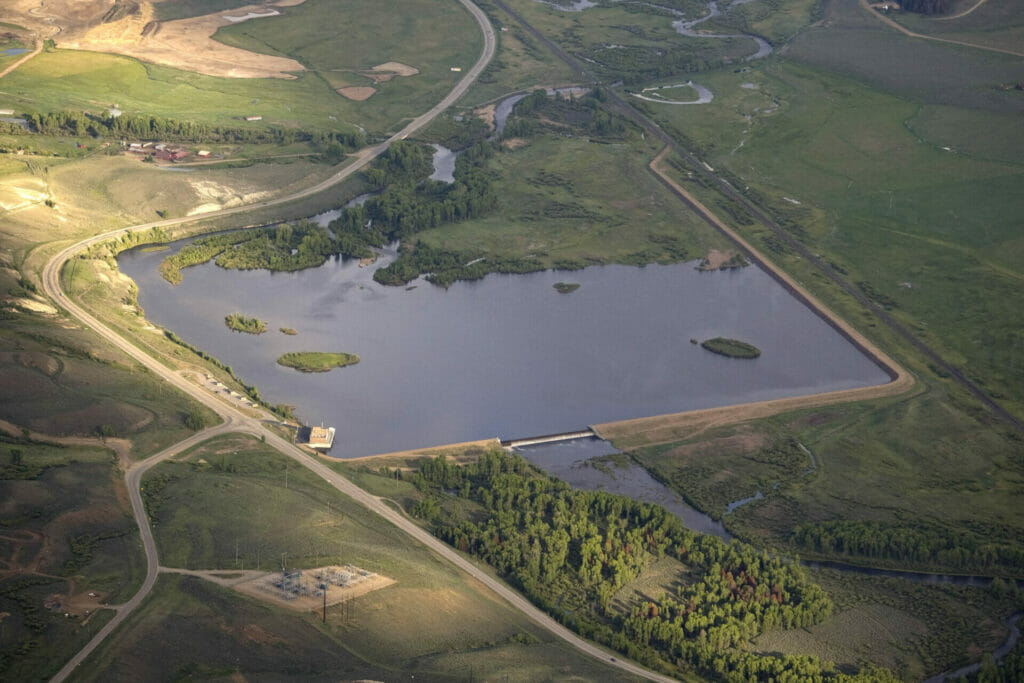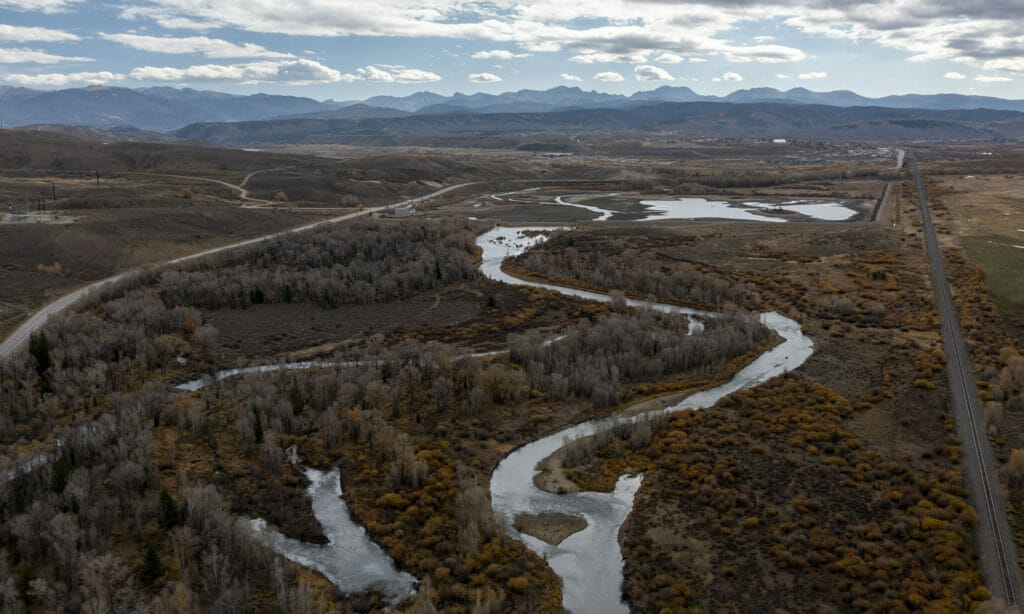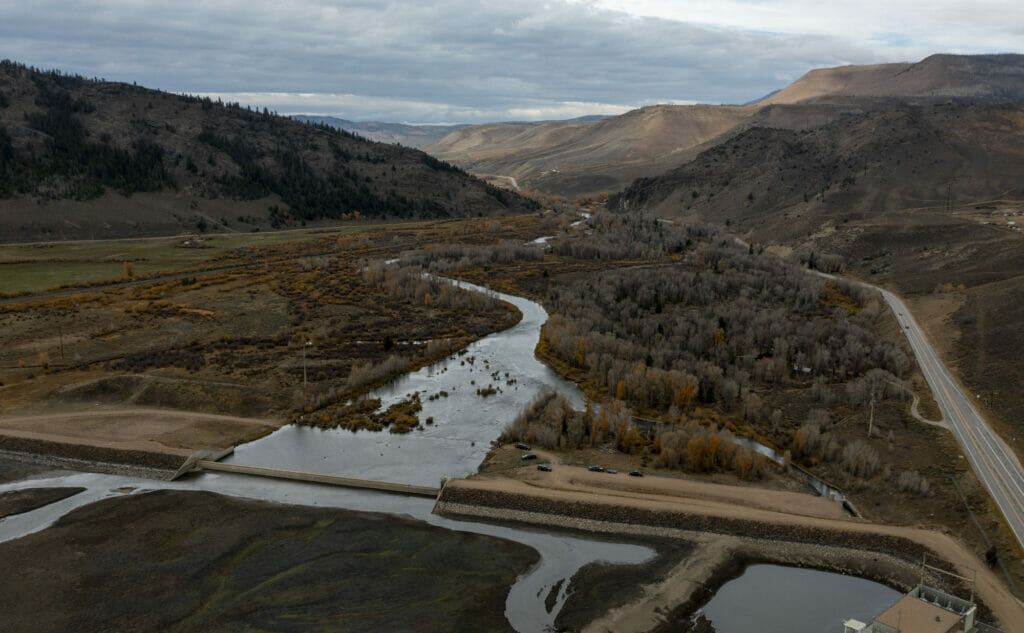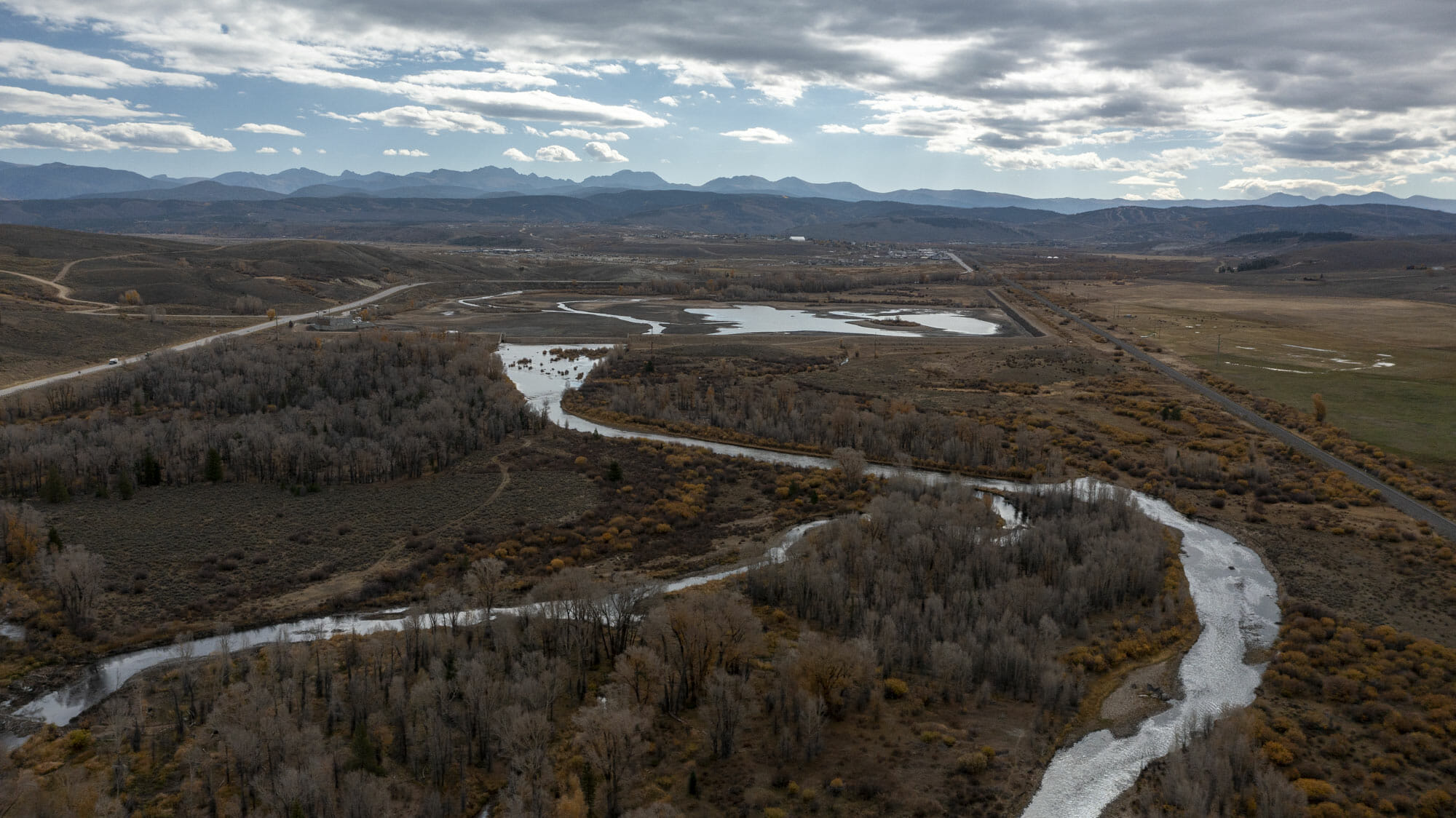Stand up in support of a project to reconstruct a healthy, fishable, reconnected river channel on the Colorado River
Connectivity courses through all that Trout Unlimited does, from our mission to unite diverse interests to care for and recover rivers and streams, to the field work of staff and volunteers on behalf of anglers who value the connection between healthy, intact habitat and public fishing opportunities.
For the upper Colorado River near Granby, CO, all that heavy lifting will soon be paying dividends, should the Colorado River Headwaters Connectivity Project be approved this March. That will allow for the reconnection of a critical segment of Colorado’s namesake river that was severed by the Windy Gap Dam more than 30 years ago.
It’s a reunion long overdue.
Since 1984, the Windy Gap Dam and the resulting reservoir have essentially plugged the mainstem of the upper Colorado just below the confluence of the Fraser River. The impact has been striking. Not only does the existing dam serve as a fish barrier, it has also severely degraded downstream habitat of the once renowned fishery. Biologists from Colorado Parks and Wildlife have documented a 38 percent loss in macroinvertebrate diversity below Windy Gap, including the disappearance of giant stoneflies, along with 100 percent of the native sculpin population. This has led to a decline in trout biomass in the surrounding Gold Medal fishing waters.

The dam has also stopped the downstream migration of gravel, an important part of a healthy river ecosystem. The gravel has been replaced by fine sediment loading both within and below the reservoir. Downstream, the sediment loads have unnaturally “armored” the streambed, effectively eliminating reproductive habitat for both fish and stream insects. Meanwhile, the reservoir has grown shallower as a result of sediments collecting above the dam, leading to higher water temperatures as the river stalls. Here, it amounts to a wide, shallow solar collector. Water temperatures above 70 degrees are increasingly common below the reservoir.

More than a decade ago, TU teamed up with Windy Gap Reservoir owner Northern Colorado Water Conservancy District, Grand County, Colorado Parks and Wildlife, and other partners to resolve the problem. The solution, in a word, is connectivity.
The project is basically an aquatic bypass around the reservoir. The plan, as laid out by the U.S. Department of Agriculture’s Natural Resources Conservation Service (NRCS), is to reduce the existing reservoir footprint by about one third and construct a new, free-flowing stretch of river alongside it, reconnecting the mainstem and negating the impacts of Windy Gap by turning it into an off-channel impoundment.
The new 5,580-foot-long river channel will be designed to function as a typical stream does, complete with meanders, side channels and floodplain features, creating a healthy, functioning riparian corridor by connecting existing upstream and downstream habitats. The design also provides a net increase of 18.28 acres of wetland and 19 acres of riparian habitat.
What’s more, it will eventually offer more than a mile of new public fishing access to potential Gold Medal-caliber waters.
The project marries multiple restoration efforts spanning more than 30 miles of the Colorado River and the Fraser River upstream. Additionally, the current water supply function of the reservoir will remain, a compromise that serves the needs of Northern Water’s customers while improving water quality, enhancing aquatic habitat, and improving recreation resources.

NRCS and TU are working with Northern Water, the Colorado Water Conservation Board, Grand County, the Colorado River Water Conservation District, Great Outdoors Colorado, National Fish & Wildlife Foundation, Gates Family Foundation, Colorado River Alliance, and other corporate and private donors to make the project possible.
If approved, construction should begin this summer and a newly reconnected—and rejuvenated—Colorado River will be in place by the end of 2023.



